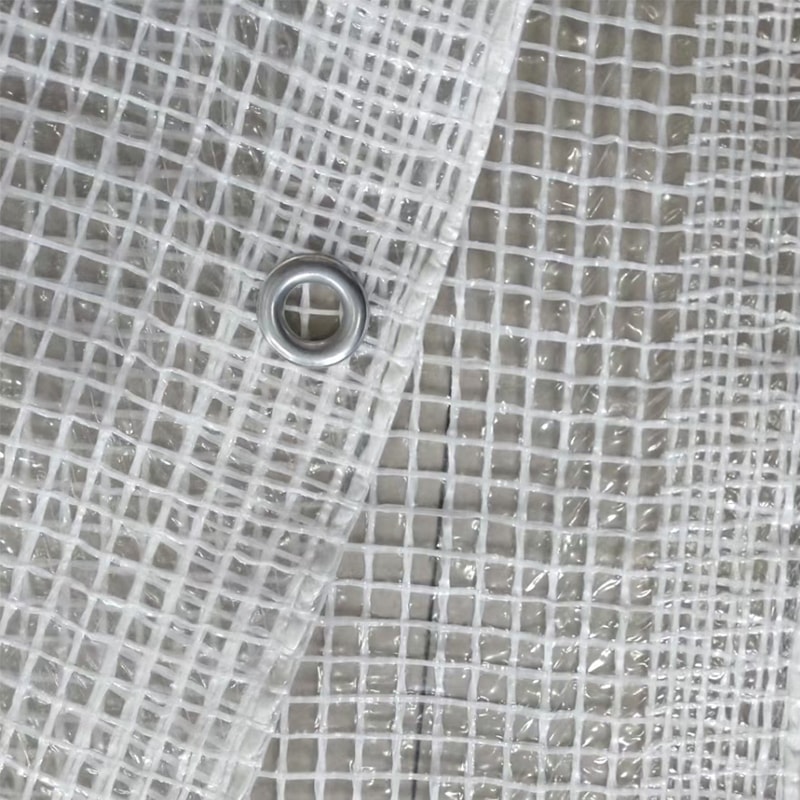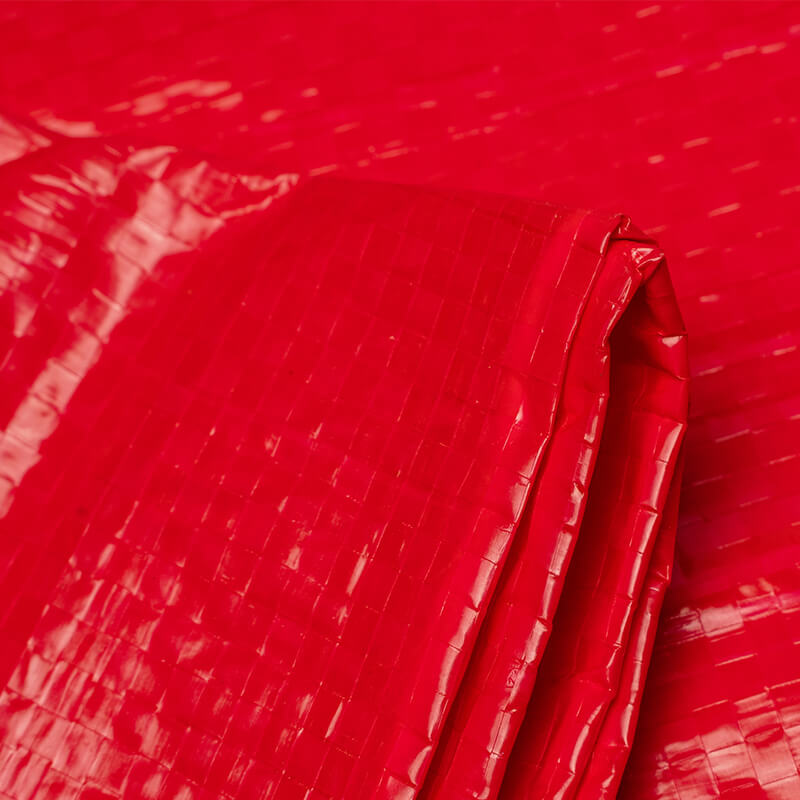Introduction
In this comprehensive guide, we will explore the ins and outs of selecting the perfect greenhouse tarpaulin to ensure your plants thrive in a protected environment. From understanding the different materials available to considering crucial factors such as UV resistance, light transmission, and waterproofing, this guide covers it all. So let’s dive in and find the best greenhouse tarpaulin for your needs!
1. Understanding Greenhouse Tarpaulins
1.1. What is a Greenhouse Tarpaulin?
A greenhouse tarpaulin is a heavy-duty, protective covering made of various materials such as PE Tarpaulin, PVC, or HDPE. It’s designed to provide your plants with a controlled environment by shielding them from harsh weather, pests, and excessive sunlight. Greenhouse tarps are popular among gardeners and farmers who want a cost-effective and versatile solution for safeguarding their crops.
1.2. Benefits of Using Greenhouse Tarpaulin
Using a greenhouse tarpaulin comes with numerous advantages, such as:
- Protection from harsh weather conditions like wind, rain, and snow
- Enhanced temperature and humidity control
- Pest and bird deterrence
- Improved light management with options for clear, shaded, or light-deprivation greenhouse tarps
1.3. Greenhouse Tarpaulin vs. Other Greenhouse Coverings
Greenhouse tarpaulins offer an affordable and versatile alternative to traditional greenhouse coverings like glass or polycarbonate panels. They are easy to install, maintain, and replace, making them an attractive option for gardeners and farmers alike.
2. Material Options for Greenhouse Tarpaulin
2.1. Polyethylene Tarpaulins
Poly Tarps are made from a lightweight, durable, and waterproof material that’s perfect for greenhouse use. They provide excellent protection against UV rays and come in various thicknesses and colors to suit your specific needs.
2.2. PVC Tarpaulins
PVC tarpaulins come in two main types: PVC Laminated Tarpaulin and PVC Coated Tarpaulin. Both are robust, waterproof, and UV resistant, making them ideal for long-term outdoor use. However, PVC-coated tarps are often more durable and heavier than their laminated counterparts.
2.3. HDPE Tarpaulins
HDPE Tarpaulin is made from high-density polyethylene, making it exceptionally strong and tear-resistant. This material offers excellent UV protection and is perfect for heavy-duty applications in the outdoors or garden.
2.4. Comparing Different Tarpaulin Materials
When selecting a greenhouse tarpaulin, it’s crucial to consider factors like UV resistance, durability, and weight. Each material has its pros and cons, so it’s essential to assess your specific needs and choose accordingly.
3. Key Features to Consider
3.1. UV Resistance
A good greenhouse tarpaulin should offer UV protection to prevent plant damage and ensure the material’s longevity. Look for tarps with UV-resistant coatings or treatments to keep your plants safe and extend the life of your tarp.
3.2. Light Transmission
The amount of light your greenhouse tarp allows through can significantly impact your plants’ growth. For example, clear greenhouse tarps provide maximum light transmission, whereas shaded or light deprivation greenhouse tarps reduce light penetration. Assess your plants’ specific light requirements to select the best tarp for your needs.
3.3. Insulation Properties
Proper insulation is essential for maintaining temperature and humidity levels within your greenhouse. Look for tarps with insulation features like double-layered construction or air pockets to help maintain a stable environment for your plants.
3.4. Tear and Puncture Resistance
A durable, tear-resistant tarp is essential for withstanding harsh weather and external factors. Heavy-duty tarpaulin options like heavy-duty tarpaulin or building construction tarpaulin are perfect for those looking for long-lasting and robust protection.
3.5. Waterproofing and Condensation Control
Waterproof tarpaulin is crucial for preventing water damage to your plants and greenhouse structure. Opt for materials like waterproof tarpaulin that effectively repel water and manage condensation.
4. Sizing and Fitting Your Greenhouse Tarpaulin
4.1. Measuring Your Greenhouse
Before purchasing a tarp, measure the length, width, and height of your greenhouse. Ensure you include any additional space required for anchoring or securing the tarp.
4.2. Selecting the Right Tarpaulin Size
Choose a tarpaulin that fits your greenhouse’s dimensions, leaving enough room for proper installation and ventilation. Consider custom-sized tarps, like those found at custom tarpaulins, if your greenhouse has unique dimensions.
4.3. Custom Tarpaulin Solutions
For greenhouses with irregular shapes or specific requirements, consider ordering a custom tarpaulin designed to meet your exact specifications. Custom tarps ensure a perfect fit and optimal performance.
5. Greenhouse Tarpaulin Installation and Maintenance
5.1. Proper Installation Techniques
Installing your greenhouse tarpaulin correctly is crucial for ensuring its effectiveness and longevity. Follow the manufacturer’s guidelines and use appropriate anchoring systems like bungee cords, ropes, or straps to secure the tarp in place.
5.2. Regular Maintenance and Cleaning
Keep your tarpaulin clean and free of debris to maintain optimal light transmission and prolong its life. Regularly inspect your tarp for damage, and repair minor issues promptly to prevent further deterioration.
5.3. Repairing Damaged Tarpaulins
Small tears or punctures in your tarp can be easily repaired using tarp repair tape or patches. For more significant damage, consider consulting a professional or replacing the tarp entirely.
5.4. Storing Your Greenhouse Tarpaulin
When not in use, store your tarp in a dry, cool location, away from direct sunlight or heat sources. Proper storage will help prevent mold, mildew, and premature aging.
6. Greenhouse Tarpaulin Costs and Budget Considerations
6.1. Factors Affecting Tarpaulin Price
The cost of a greenhouse tarpaulin varies depending on factors like material, size, and quality. Custom-made tarps or those with specialized features may also carry a higher price tag. Consider your specific needs and budget when selecting the perfect tarp for your greenhouse.
6.2. Investing in Quality
While it might be tempting to choose the cheapest option available, investing in a high-quality tarpaulin can save you money in the long run. A durable, well-constructed tarp will provide better protection and last longer, reducing the need for frequent replacements.
6.3. Balancing Cost and Performance
Find the right balance between cost and performance by assessing your greenhouse’s specific requirements and selecting a tarp that meets those needs without breaking the bank. Research various options and read customer reviews to ensure you’re making an informed decision.
Summary
Choosing the perfect greenhouse tarpaulin involves understanding the different material options, assessing key features like UV resistance and insulation, and finding the right size and fit for your greenhouse. By investing in a high-quality tarp that meets your specific needs, you’ll create an optimal environment for your plants to thrive while ensuring your greenhouse remains protected.
Frequently Asked Questions
Q: How often should I replace my greenhouse tarpaulin?
A: The lifespan of a greenhouse tarpaulin depends on factors like material quality, UV resistance, and exposure to harsh weather conditions. Generally, a well-maintained tarp can last several years. Regularly inspect your tarp for signs of wear and damage to determine when it’s time for a replacement.
Q: Can I use a clear plastic tarp for my greenhouse?
A: Yes, clear plastic tarps are a popular choice for greenhouses due to their excellent light transmission properties. They allow maximum sunlight penetration, creating an ideal environment for plant growth.
Q: What is the best material for a greenhouse tarpaulin?
A: The best material for a greenhouse tarpaulin depends on your specific needs and budget. Polyethylene, PVC, and HDPE are all popular choices, each with its unique advantages and disadvantages. Consider factors like durability, UV resistance, and insulation when selecting the best material for your greenhouse.
Q: How do I clean and maintain my greenhouse tarpaulin?
A: To clean your greenhouse tarp, use a soft brush or cloth and a mild soap solution to remove dirt and debris. Rinse thoroughly with water and allow the tarp to dry completely before reattaching it to your greenhouse. Regularly inspect your tarp for damage and address any issues promptly to prolong its life.
Q: Can I use a regular tarp as a greenhouse cover?
A: While it’s possible to use a regular tarp as a greenhouse cover, it may not provide the same level of protection and performance as a tarp specifically designed for greenhouse use. Greenhouse tarps are typically made from materials that offer better UV resistance, light transmission, and insulation properties than standard tarps.






